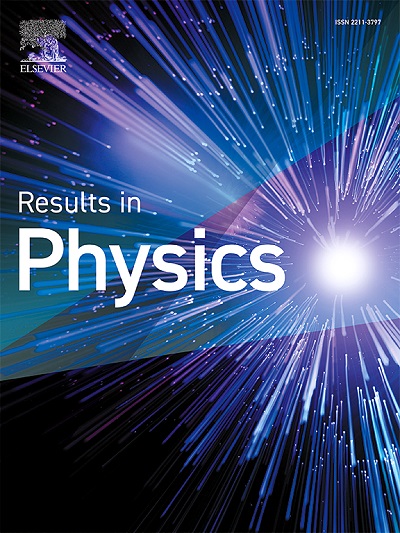Polarization response characteristics of structure gradient MWCNTs/PDMS under vibration
IF 4.4
2区 物理与天体物理
Q2 MATERIALS SCIENCE, MULTIDISCIPLINARY
引用次数: 0
Abstract
Low electromechanical coupling coefficient has become the key problem restricting the application of flexible electronic components. In this paper, structure gradient MWCNTs/PDMS composites have been prepared, the electromechanical properties have been investigated by cantilever beam experiment. Numerical simulations based on flexoelectric theory have been conducted to investigate the relationship between polarization strengths, voltage distributions and strain gradients. The results show that polarization voltage U show sinusoidal-like periodic decay behavior. Generally, U of linear structure gradient cantilever beam (98.6 mV) are larger than homogeneous structure (56.3 mV, 1 wt%), symmetry and anti-symmetry structure gradient. The polarization strength P of linear structural gradient cantilever beam is in the range of −600 ∼ 600 pC/m2. There exists an out of phase relationship between P and displacement. The flexoelectric coefficients of homogeneous structure MWCNTs/PDMS are generally about 10-10C·m−1. However, that of linear structure gradient MWCNTs/PDMS reaches 10-8C·m−1. The structure gradient MWCNTs/PDMS composites with high electromechanical coupling coefficients can be used in the field of flexible intelligent sensing in the future.
求助全文
约1分钟内获得全文
求助全文
来源期刊

Results in Physics
MATERIALS SCIENCE, MULTIDISCIPLINARYPHYSIC-PHYSICS, MULTIDISCIPLINARY
CiteScore
8.70
自引率
9.40%
发文量
754
审稿时长
50 days
期刊介绍:
Results in Physics is an open access journal offering authors the opportunity to publish in all fundamental and interdisciplinary areas of physics, materials science, and applied physics. Papers of a theoretical, computational, and experimental nature are all welcome. Results in Physics accepts papers that are scientifically sound, technically correct and provide valuable new knowledge to the physics community. Topics such as three-dimensional flow and magnetohydrodynamics are not within the scope of Results in Physics.
Results in Physics welcomes three types of papers:
1. Full research papers
2. Microarticles: very short papers, no longer than two pages. They may consist of a single, but well-described piece of information, such as:
- Data and/or a plot plus a description
- Description of a new method or instrumentation
- Negative results
- Concept or design study
3. Letters to the Editor: Letters discussing a recent article published in Results in Physics are welcome. These are objective, constructive, or educational critiques of papers published in Results in Physics. Accepted letters will be sent to the author of the original paper for a response. Each letter and response is published together. Letters should be received within 8 weeks of the article''s publication. They should not exceed 750 words of text and 10 references.
 求助内容:
求助内容: 应助结果提醒方式:
应助结果提醒方式:


